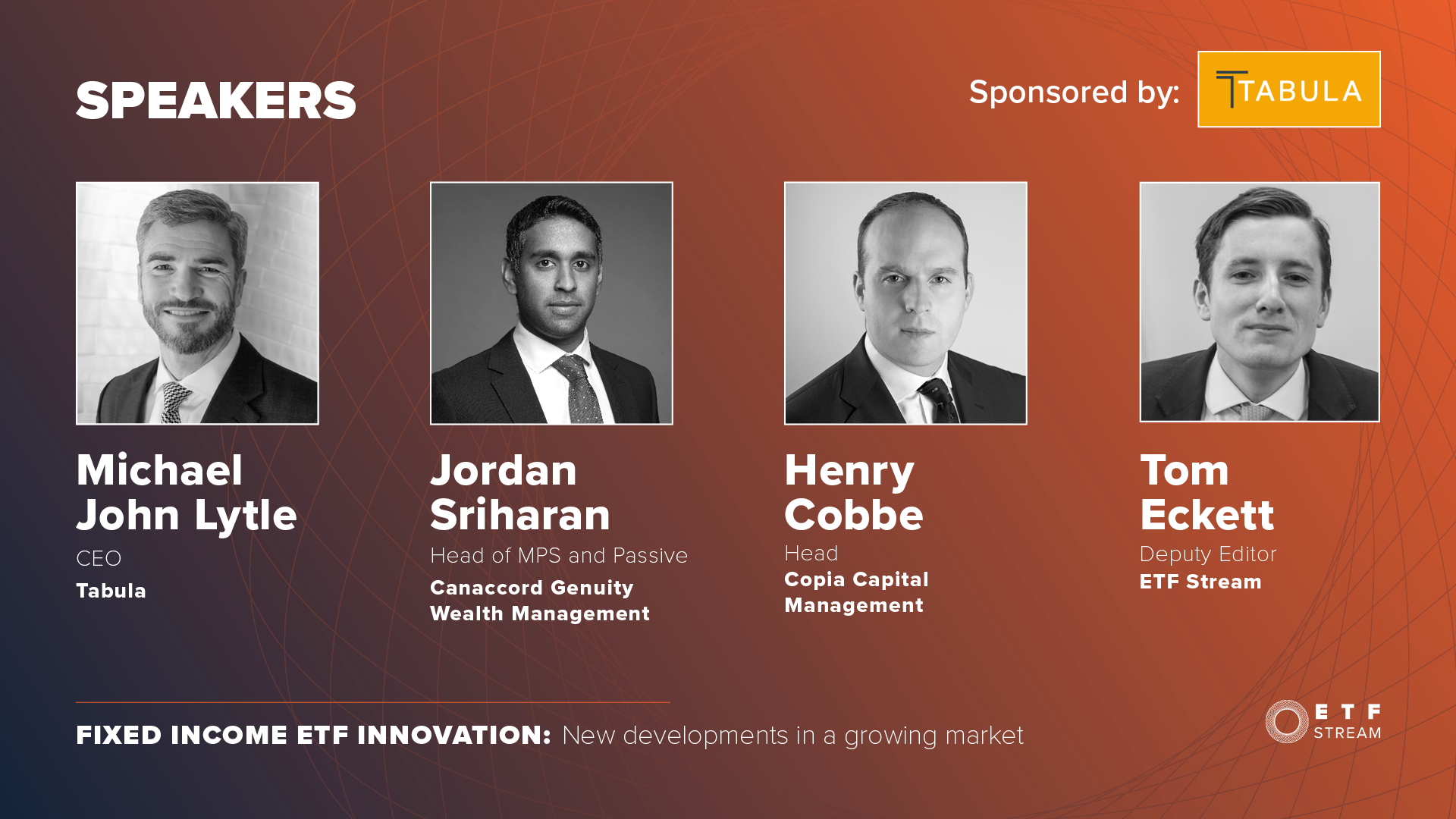The
of ETF Stream’s webinar series, ETF Ecosystem Unwrapped, explored the developments of the growing market that is fixed income ETFs.
Beginning with a broad overview of the fixed income market in Europe, Michael John Lytle, CEO of Tabula Investment Management, explained how there has been a recent increase in demand for the asset class, particularly using passive and ETF structures.
“Over the past 15 months, we have seen numerous cases where equity ETF flows have been negative while fixed income ETF flows have been heavily positive,” Lytle said. “However, this is only the beginning of the wave as the fixed income asset class is double the size of the equity asset class with $100trn in assets versus $50trn in assets, respectively.”
Comparing the size of the two asset classes and that only 5% of the bond market is managed passively compared to 20-30% of the equity market, according to Lytle, there is a lot of potential for growth.
From an investor perspective, Jordan Sriharan, head of MPS and passive at Canaccord Genuity Wealth Management, said the reason he uses fixed income ETFs is more for tactical exposures.
“In the equity space, it is clear investors use passive products to gain exposure for shorter time periods whereas on the fixed income side, positions in aggregate tend to be a bit more structural,” Sriharan explained. “We will use an active manager for a longer term structural positions but will use ETFs when we look at a 6-12 month time horizon to add some credit risk and/or government bond rates exposure.”
ETF Ecosystem Unwrapped: Making the European ETF market tick
Commenting on the benefits of fixed income ETFs, Henry Cobbe, head of Copia Capital Management, said he sometimes “gets more price discovery from the ETF market than is possible from the quoted values of the underlying securities”.
“In stressed conditions, I find fixed income ETFs to be a useful indicator of that market stress (for example, their bid-ask spreads and any disconnect to NAV).
“If it clears, trades and settles then I don’t see any faults with the ETF structure, but rather the structure of the [underlying] market at the stressful period,” he added.
However, one potential issue for credit ETF products that the panel discussed was the strategy of overweighting the most indebted companies for which some investors “were not comfortable with”, according to Sriharan. One solution he would like to see is the introduction of equally-weighted bond indices.
Lytle agreed and added that the real issue lies in the efficiency of the baskets that ETFs track. Some 10-20% of companies that make up broad bond indices drive the performance of the benchmark so there should be more focus on those companies and they should be equally weighted. Importantly, the bonds that are selected to represent those issuers need to be highly liquid.
“We need to build better tools to identify which bonds are actually liquid. Given that bonds trade over-the-counter (OTC), there are some electronic platforms that could shed light on actual liquidity of individual European credit bonds,” Lytle added. Nonetheless, the variety of fixed income ETFs available to investors is expanding and are enabling them to construct a more tailored portfolio with a more targeted investment approach.
Cobbe said: “Advisers used to implement their bond exposure using a strategic bond fund, thereby delegating this [bond investing] decision to an active bond fund manager.
“That was okay at the time because there was an absence of many other options, but what we are seeing now is a much more focused and targeted approach to constructing portfolios, where there is more nuanced thinking about duration and credit quality.”
Another trend within the fixed income space which is building momentum is the inclusion of environmental, social and governance (ESG) strategies. However, green bond investors are facing the issue of the bond not actually being green.
According to Lytle, the Climate Bond Initiative (CBI) recorded the issuance of green bonds in the first five months of 2020 to be $170bn. Of the $170bn, only $16bn were certified CBI green bonds. Another $55bn were labelled green and aligned with the CBI definition but were not certified. The remaining $99bn were labelled green but were not aligned with the CBI’s definition.
“Issuers can call their debt a green bond but an investor can’t just go by the name; they have to dig deeper. This represents a huge amount of effort while the data and categorisation have yet to be systemised,” Lytle said.
Sign up to ETF Stream’s weekly email here





